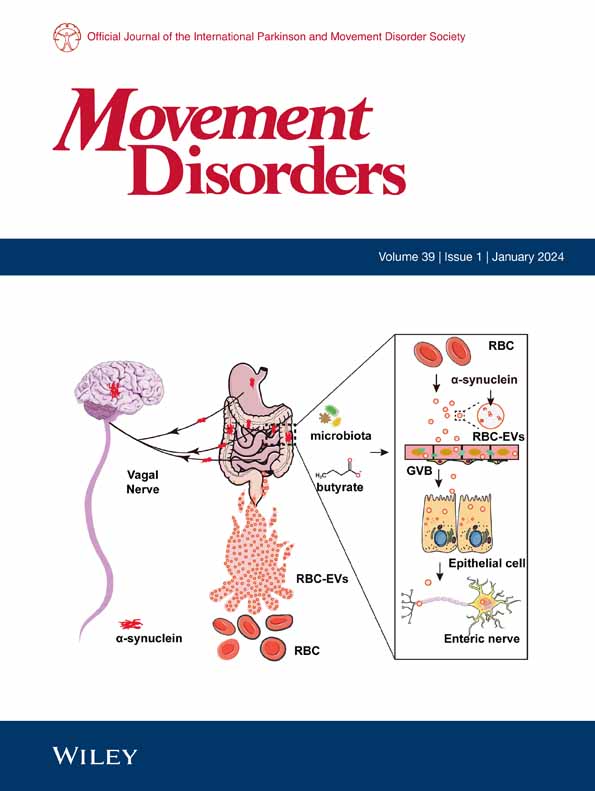Neurophysiology of Atypical Parkinsonian Syndromes: A Study Group Position Paper.
IF 7.4
1区 医学
Q1 CLINICAL NEUROLOGY
引用次数: 0
Abstract
Atypical parkinsonian syndromes (APs) are characterized by parkinsonian features combined with additional motor and non-motor signs and symptoms. Neurophysiological studies have contributed to clarifying differences and similarities between APs and idiopathic Parkinson's disease (PD) and to unravel specific pathophysiological features of APs. A comprehensive and updated evaluation of the potential clinical utility of the available neurophysiological tools in APs is, however, currently needed. The Neurophysiology Study Group of the International Parkinson and Movement Disorder Society reviewed previously published neurophysiological studies including those based on electromyography, electroencephalography, and evoked potentials, transcranial magnetic stimulation and kinematics, in most relevant APs, including progressive supranuclear palsy, multiple system atrophy, corticobasal syndrome, Lewy body dementia, fronto-temporal dementia, vascular parkinsonism, normal pressure hydrocephalus, and drug-induced parkinsonism. Following a critical narrative review of all the available information for each AP, the study group examined the most relevant pathophysiological advances achieved in the field owing to the application of specific neurophysiological tools. Furthermore, the review includes statements regarding the potential role in a research context (ie, pathophysiological investigation) as well as in the clinical setting (ie, clinical utility) of each neurophysiological technique, through an estimation of the corresponding levels of evidence, based on the Grading of Recommendations, Assessment, Development, and Evaluation (GRADE) system. Finally, an example of a possible stepwise approach based on the sequential application of specific neurophysiological techniques for better supporting the clinical differential diagnosis of PD and APs is proposed. © 2025 International Parkinson and Movement Disorder Society.非典型帕金森综合征的神经生理学:一个研究组立场文件。
非典型帕金森综合征(APs)的特点是帕金森特征结合了额外的运动和非运动体征和症状。神经生理学研究有助于阐明APs与特发性帕金森病(PD)之间的异同,并揭示APs的特定病理生理特征。然而,目前需要对APs中可用的神经生理工具的潜在临床效用进行全面和最新的评估。国际帕金森与运动障碍学会神经生理学研究组回顾了先前发表的神经生理学研究,包括基于肌电图、脑电图、诱发电位、经颅磁刺激和运动学的研究,这些研究涉及大多数相关ap,包括进行性核上性麻痹、多系统萎缩、皮质基底综合征、路易体痴呆、额颞叶痴呆、血管性帕金森病、常压脑积水和药物性帕金森症。在对每个AP的所有可用信息进行批判性的叙述性回顾之后,研究小组检查了由于特定神经生理学工具的应用而在该领域取得的最相关的病理生理学进展。此外,该综述还包括关于每种神经生理学技术在研究背景(即病理生理学调查)以及临床环境(即临床应用)中的潜在作用的陈述,通过对相应证据水平的估计,基于推荐、评估、发展和评估(GRADE)系统的分级。最后,提出了一个基于特定神经生理学技术的顺序应用的可能的逐步方法的例子,以更好地支持PD和APs的临床鉴别诊断。©2025国际帕金森和运动障碍学会。
本文章由计算机程序翻译,如有差异,请以英文原文为准。
求助全文
约1分钟内获得全文
求助全文
来源期刊

Movement Disorders
医学-临床神经学
CiteScore
13.30
自引率
8.10%
发文量
371
审稿时长
12 months
期刊介绍:
Movement Disorders publishes a variety of content types including Reviews, Viewpoints, Full Length Articles, Historical Reports, Brief Reports, and Letters. The journal considers original manuscripts on topics related to the diagnosis, therapeutics, pharmacology, biochemistry, physiology, etiology, genetics, and epidemiology of movement disorders. Appropriate topics include Parkinsonism, Chorea, Tremors, Dystonia, Myoclonus, Tics, Tardive Dyskinesia, Spasticity, and Ataxia.
 求助内容:
求助内容: 应助结果提醒方式:
应助结果提醒方式:


